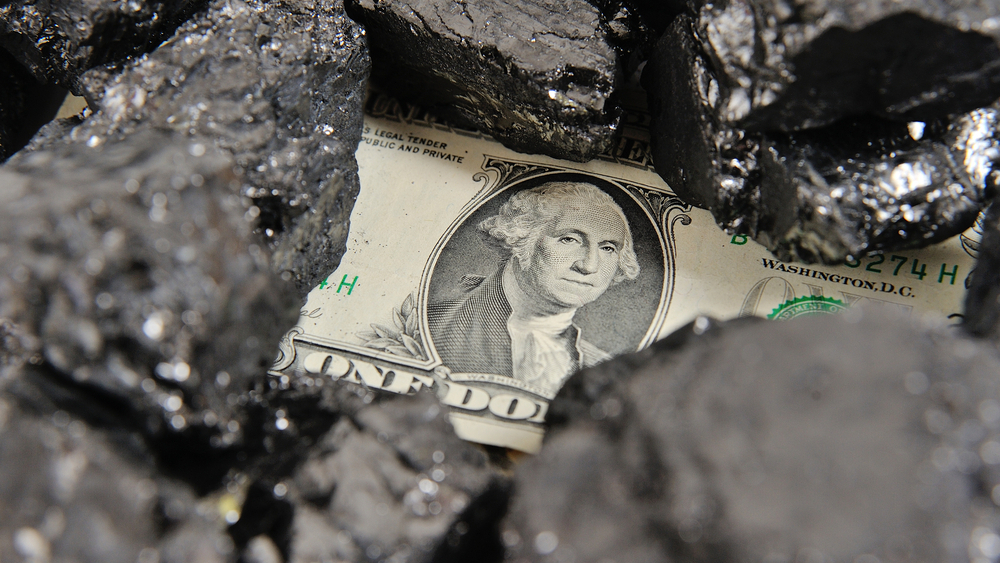
Can Nordic oil fund’s private equity push green its portfolio?
Norway’s $1.5 bn sovereign wealth fund could make its debut on the private equity markets, filling a niche for climate financing
Plans by the world’s largest sovereign wealth fund to invest up to $70 bn in private equity could bring more money into the climate space, experts told Net Zero Investor, thanks to a higher control over management decisions and capital expenditure.
Established back in 1996 after one of the biggest offshore oilfields was discovered in the North Sea, Norway’s Government Pension Fund Global (GPFG) aimed at shielding the economy from imbalances stemming from oil and gas production revenues.
The GPFG owns around 1.5% of listed stocks globally and has stakes in more than 9,200 companies, including Apple and Nestlé.
As sovereign wealth funds worldwide have expanded their allocations to unlisted assets over the past decade, the Norwegian fund also looks to diversify beyond public markets and broaden its investment universe to private equities.
Investing in unlisted equities …
The Norwegian ministry of finance asked last March Norges Bank Investment Management (NBIM), which manages the GPFG, to analyse whether the fund should gradually add unlisted equities to its portfolio of stocks, bonds, real estate and renewable energy infrastructure – after the government rejected a similar proposal in 2018 on transparency and management cost concerns.
For Alasdair Docherty, sustainable finance and data analyst with the Institute for Energy Economics and Financial Analysis (IEEFA), “counter arguments listed by the ministry of finance previously remain valid,” but it may now be a matter of fiduciary duty.
“The reignition of the private equity debate followed its mention in the Sverdrup Commission’s annual white paper, which noted that if a significant share of global value creation moved out of the listed market, the implications of that for the GPFG’s investment strategy would have to be considered,” he explained to Net Zero Investor, as that market has grown rapidly in the last five years.
“Principles of broad diversification might tilt things in the favour of the bank,” Docherty noted. “Eschewing such a significant market segment – that incidentally appears quite profitable, the bank argues, might amount to a failure of fiduciary duty.”
At the end of the first quarter 2023, global private equity funds were managing $7.8 tn in assets – up 20% from 2017, which Norges described last month in its letter in response to the government as “significantly faster” than on the listed equity market.
Private equity has a vital role to play in the energy transition, one that is much larger than its market share might suggest.
The Nordic bank also believes that the GPFG could produce in private equity higher net returns in the long term, as large investors “may have better access to the best managers, a better bargaining position and a greater capacity to co-invest with them.”
“I think that relates more to the fund’s ability to negotiate with managers,” Docherty stated, implying that the fund will likely use its size and reputation to negotiate better rates with managers while requiring certain terms, such as transparency, to be met.
In his view, investing in the private equity markets can not only bring capital that might otherwise be unavailable, but also enables investors to work very closely with company management, including on decisions linked to portfolio investments.
“When you’re investing privately, you take a controlling stake in that company,” he claimed, citing some “privileged position.” On the other hand, “the closest public equity comes to this is through voting policy and stewardship programmes.”
Norges however warned of the lack of public information available at unlisted companies, which Docherty confirmed.
“Private equity is not subject to the same level of transparency or scrutiny that is increasingly required of public counterparts, and ultimately private equity firms are driven to invest more by profit than, for example, double materiality concerns,” he said.
“Critics would further point to the fact that it continues to support fossil fuel activities around the world,” he added as Paris-based NGO Reclaim Finance found earlier this year that private equity firms had bought $60 bn of oil, gas and coal assets from energy companies between 2020 and 2021 through 500 transactions – a third more than renewable energy investments.
“Private equity continues to offer a way out for fossil fuel companies that are looking to offload particularly dirty assets, so long as they are willing to do it at heavily discounted prices,” the analyst pointed out. “This allows fossil fuel companies to reduce their emissions metrics, whilst simply passing the pollution problem on to an owner that is less likely to face public scrutiny.”
But in recent years, private equity markets have been mirroring the trends seen in public equities. And that includes investor calls for more disclosure and transparency in their reporting as their exposure to environmentally friendly assets increases.
“As a source of capital, private equity has a vital role to play in the energy transition, one that is much larger than its market share might suggest,” Docherty stressed. “Private equity (…) punches well above its weight in terms of influence.”
Norway’s ministry of finance will give its recommendation next April before the parliament makes a final decision, head of media at Norges Line Aaltvedt indicated in an email to Net Zero Investor, declining to comment on the climate investment front.
So, could the investment grass be greener in private equity?
… A chance to fund climate fixes?
“Our expectations do not differentiate between listed and unlisted companies,” Norges said in its letter as it intends to ask private equity funds to report on sustainability and corporate governance at a time when the financial sector is putting a greater emphasis on responsible investment and pursues efforts to collect environmental, social and governance (ESG) data for unlisted stocks.
Last March, the International Forum of Sovereign Wealth Funds (IFSWF) and the One Planet Sovereign Wealth Fund Network (OPSWF) surveyed 40% of the world’s 90 sovereign wealth funds to find that nearly two thirds of them believed that taking climate change into account would improve their long-term returns – the sign of a growing understanding of related risks and opportunities.
For 74% of the respondents, addressing climate change was actively part of their mandate in 2022. As such, the funds were 65.7% to say that they would engage with portfolio companies on environmental issues last year, against just a half in 2020.
“As long-term investors with limited liabilities, sovereign wealth funds are well positioned to invest in private markets, particularly in technologies or projects that require high capital expenditure,” a spokesperson for the IFSWF wrote to Net Zero Investor.
“Many energy transition technologies – not only renewable energy generation, but also technologies such as carbon capture and storage, smart grids and energy storage – demand substantial upfront investment.”
According to data from the IFSWF, sovereign wealth funds have generally invested over the 2017-2022 period between 60% and 70% in unlisted assets rather than in public firms in renewable energy infrastructure and other climate solutions and technologies – apart from 2021, when a spike in the use of investment platforms with other investors or asset managers was observed.
“Sovereign wealth funds have been involved in financing major renewable energy projects, especially in developed countries with proven long-term business cases,” the IFSWF spokesperson said. “Sovereign wealth funds have also increased the energy efficiency of some of their major commercial property developments or invested in new energy-efficient developments.”
The GPFG, like other funds, already counts unlisted real estate and renewable energy infrastructure assets in its portfolio. If they only represent a small portion of its investments, up to 9% of the fund can currently be invested in those, Norges’ letter read.
Sovereign wealth funds are well positioned to invest (…) in technologies or projects that require high capital expenditure.
Will the fund’s push in private equity markets fill that gap and finance further green projects? Or, as Docherty wonders, will Norges bring the sustainability and good practice criteria associated with its public market investments into the private space?
“Although much of the discourse on raising money to fund the energy transition is considered in terms of public budgets, most of the money will need to come through the normal cyclical forces that drive capital allocation,” the climate finance specialist said, pointing to a “golden opportunity” for private assets to finance the global transition to a low-carbon economy.
At the end of last year, the fund had 51% of finance greenhouse gas emissions covered by company engagements, 17% of portfolio companies with net-zero targets for 2050, and 6% of equities invested in firms generating revenues from climate fixes.
“If NBIM is willing to impose stewardship and sustainability standards in this space, even if only in the course of doing its fiduciary duty, the GPFG could certainly be a force for positive change,” Docherty commented. But not without a warning.
“Just like with any type of investing, private equities are not inherently green or sustainable or aiming for a net-zero transition,” he added. “A lot of private equity firms, typically, don’t guarantee any form of stewardship (in terms of sustainability) and don’t tend to have public policies with regards to coal or oil and gas, and so that’s a bit of a concern.”
In July, Reclaim Finance revealed that of 15 of the largest private equity firms based in North America and Europe, only two had a policy setting out restrictions for the coal sector, and just one had a policy covering the oil and gas industry.
The GPFG, on its side, is still buying fossil fuel company credit issuance in its bond portfolio. This may however change as Norway announced at the COP28 climate summit that it was joining the Clean Energy Transition Partnership (CETP), which aimed at ending international public finance for fossil fuels. The country has one year to implement its pledge.
Yet, it’s not all about investing, the IFSWF spokesperson explained. “As major international investors, sovereign wealth funds can engage with their portfolio companies and use their voting power to encourage decarbonising behaviours.”
The forum also pointed to sovereign wealth funds’ latest interest in private debt which, in light of the withdrawal of major banks from the syndicated market, represents another opportunity for funds to take part in financing the energy transition.




